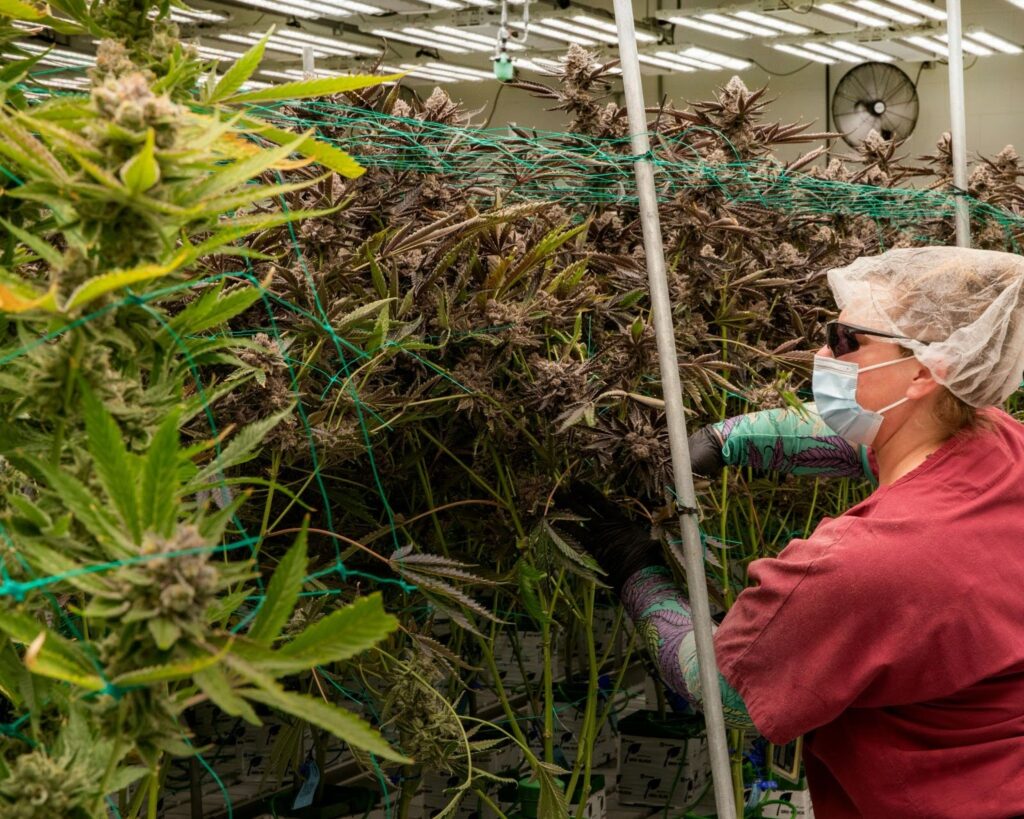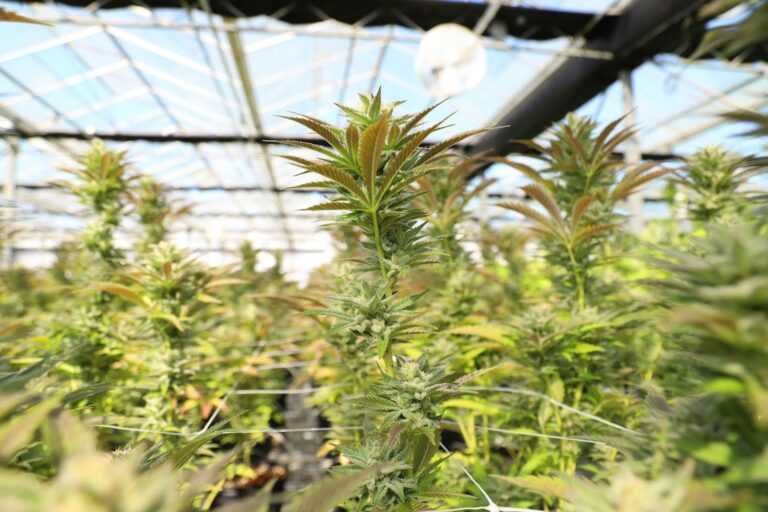Have you ever wondered why products in the cannabis industry take a long time to become available on the market?
Everyone in the cannabis industry has learned that a simplistic supply chain does not exist.
Did you know that by 2028, the global cannabis industry will reach $197.74 billion? This is going to be an explosive shift in the market and a new challenge for already strained infrastructure.
As more states legalize recreational and medicinal cannabis, the industry is growing. More players are entering the cannabis market.
It has become a highly complex and competitive environment. What can happen when demand overgrows and supply cannot keep up? Or how do you navigate a web of state-specific regulations that make it problematic to operate smoothly across state lines?
This article will explore the biggest challenges in the cannabis supply chain. These include regulatory hurdles, logistics issues, and supply-demand imbalances.
Learn to overcome these challenges. Use practical strategies to smooth operations, comply with the rules, and keep products flowing from the farm to the customer.
Impact of Legalization on Industry Expansion
Legalizing marijuana has changed the industry. It turned a limited market into a multi-billion-dollar sector.
More states are legalizing recreational and medical cannabis. This is driving the industry’s rapid growth.
This shift created opportunities for big companies to scale up. It opened the market to new businesses, entrepreneurs, and investors while also bringing a wider range of products, including various cannabis strains and infused items like edibles, oils, and topicals.
Additionally, the legalization of marijuana in the country has led to the creation of thousands of jobs in the sector.
This has promoted improvements in local economies and boosted state job creation in areas where the law has been adopted.
Increased Demand Outpaces Supply
Legalizing cannabis increases demand. Recreational users seek new products. Medicinal users rely on cannabis for treatment.
The cultivation, processing, and distribution of cannabis are heavily regulated, making it difficult for businesses to expand and meet rising demand quickly.
Just growing cannabis is an enormous investment of time. It takes several months for the plant to grow and mature to the point that it can even be harvested.
Even with their expansions, there will be a gap in the market. The following challenges occur when demand is increased:
Product Shortages: Increased demand is easily outpaced by available supplies. Even when cultivation increases, some markets need a more consistent supply of their product.
Longer Lead Times: Long cultivation and processing lead times mean the product will take more time to reach a final consumer from the farms.
Transportation and distribution are complex. State regulations and non-standardized infrastructures cause this. These challenges hurt businesses.
Inconsistent Quality: As businesses push to meet demand, product quality can sometimes suffer.
Customers expect a high standard of consistency. They are wary of edibles’ inconsistent potency and variations in flower quality.
To stay ahead in this growing market, adopt scalable logistics, invest in automated inventory systems, or diversify your suppliers. This will ensure a steady flow of products.
Are you looking to monitor your cannabis yield in real-time? PlanaCan helps you track every harvest, capturing key decisions and their impact. With all data in one place, you can identify successful methods. You can avoid past mistakes. You can also refine your processes for higher yields and greater profits.
So, what are the logistical challenges that the cannabis industry faces? Let us explore.
Key Logistics Challenges within the Cannabis Supply Chain
Logistics is the most crucial part of the cannabis supply chain. It’s also the most complicated and challenging sector in the industry.
With strict state and federal rules, transporting cannabis is tough. Many businesses face unique challenges in moving cannabis from farms to stores.
Here are some of the significant logistics challenges you might face:
1. State-to-State Compliance
Cannabis laws vary by state, making compliance a nightmare for businesses. Every state has its own rules regarding cultivation, distribution, and sales.
Therefore, expansion of operations from one state to another may require significant changes. Here are some key compliance hurdles you might face:
State-Specific Rules: Some states allow transporting only in state-approved vehicles and through specific checkpoints.
Such regulations complicate your logistics. This is especially true when operating across several states.
Legal Pitfalls: Ignoring state regulations can lead to fines and jail time. Navigating these laws requires constant vigilance and perfect knowledge of each state’s rules.
Limited Flexibility: You may comply in one state. But, moving to another might take time and need a significant overhaul of your systems, including licensing, packaging, and labeling.
2. Limited Transportation Options
Transporting cannabis products has unique challenges not faced by other industries.
Many mainstream transport companies won’t carry cannabis due to its federal illegality. This limits your options for moving goods.
Here’s how this affects your logistics:
Shipping restrictions: Companies can’t ship cannabis across state lines. So, each state must have its own distribution system. This makes it complex to manage the same inventory and demand shifts in one region.
Fewer Transport Providers: A federal ban on cannabis reduces the number of transport companies that ship it.
This, in turn, decreases the number of transport providers. Therefore, businesspeople often have trouble getting their products to market.
Higher Costs: The few transport providers raise shipping costs. Cannabis businesses must use a small number of specialized, often pricey, transporters.
3. Security Issues
The high value and illegal status of cannabis raise transport security concerns.
Any cannabis business must ensure that shipments are protected against theft. Some significant security issues include the following:
Cargo Theft: Cannabis shipments are often high-value targets for theft. So, companies must invest in strong security measures. These include armored vehicles, GPS tracking, and surveillance systems.
Employee Safety: The drivers transporting cannabis products are vulnerable. They must be better trained and protected while in transit.
Do you find it challenging to keep your team aligned while maximizing yields? PlanaCan helps you increase productivity by centralizing all tasks and communication. The tool ensures everyone stays on track, even when on the go. With mobile apps for Android and iOS, you can update, view, and complete tasks from your devices. Adding task-specific notes helps crop production. It reduces misunderstandings, saves time, and aligns the team.
4. Temperature Sensitivity and Product Integrity
Cannabis products, especially edibles, oils, and concentrates, are very heat and environment-sensitive.
So, special equipment and planning are needed. They must ensure the product’s integrity in transport.
Spoilage Risks: Improper temperature or humidity can quickly spoil products. They may degrade and lose potency, resulting in wasted products and lost revenue.
Specialized Transportation: Cannabis products often need refrigeration to stay fresh.
This increases the degree of complexity and cost associated with logistics.
Quality Control: Rigid quality controls must be in place at every stage of transport. This ensures the products arrive in perfect condition, but these controls also consume a lot of resources.
5. Lack of Standardization in the Supply Chain
The cannabis industry is ever-evolving. With varied standards, major logistical issues arise. This is true both in the areas and in B2B practices.
Regulations are evolving and expanding. This makes it hard to keep your supply chain consistent.
Variable Compliance: State-to-state regulations on packaging, labeling, and testing can vary, so processes may change based on these different standards.
Poor Quality Control: Without a common set of product standards, quality would remain the same, which would hurt customer satisfaction and compliance.
Are you struggling to keep up with your cannabis growth schedule? PlanaCan‘s interactive calendar helps you plan months while efficiently managing daily tasks. Adjust schedules as needed and keep all cultivation information in one place, ensuring no task is missed.
6. Capacity and Infrastructure Constraints
The cannabis market is booming. Businesses are battling logistics capacity constraints.
Whether limited warehouse space, too few transportation options, or a shortage of qualified labor, these issues often slow the flow of goods within the supply chain.
Supply Chain Bottlenecks: High demand and limited infrastructure can delay fulfillment.
This is common, where cannabis businesses are growing fast. But local logistics can’t keep up.
Labor Shortages: A demand for specialized workers, including drivers and warehouse staff, has created labor shortages, which have worsened logistics problems.
Now that we know the key challenges that the cannabis industry faces let’s understand the regulations and quality control measures that accompany them.

Regulatory Compliance and Quality Control
Cannabis supply chain challenges include mainly regulatory compliance and quality control. They are the industry’s most significant barriers.
From planting cannabis seeds to selling them, businesses must meet many regulations, both state and federal, to ensure that their products are safe, effective, and legal.
Here’s a closer look at some of the key compliance and quality control challenges:
1. Navigating Strict Rules and Regulations Across States
Cannabis regulations vary widely by state. So, businesses must stay updated on the latest laws. Here are the most common compliance challenges:
Licensing: It’s expensive and competitive to get licenses to grow or sell cannabis. Some states have few permits, making it hard for small businesses to enter the market.
State-by-State Testing: Each state has its own testing requirements for potency and pesticides. Failure to meet them could lead to recalls, fines, or reputation loss.
Packaging & Labeling: States impose strict rules on labeling, warnings, dosage, and childproof packaging. Non-compliance can result in product removal or fines.
Compliance under a changing landscape: Ever-changing state laws, legalization, and updates on cannabis create complexity for businesses to remain fluid and up-to-date about them.
Staying compliant requires vigilant observation, a dedicated compliance team, and transparent operations.
2. Ensuring High Standards in Cultivation and Packaging
A cannabis business must know the regulations and ensure that its products meet quality standards at every stage.
This includes the growth, production, and packaging processes. Consistency and safety will be key factors in consumer trust and loyalty.
Quality Control in Growing: Cannabis plants are very sensitive to environmental parameters. Inconsistencies in light, temperature, and humidity may affect potency and quality.
The company should be pesticide- and herbicide-compliant to ensure the safety of consumers.
Batch consistency: It is difficult to maintain because demand is increasing. Cultivation or extraction can cause tiny differences in potency, flavor, and safety. So, every batch requires rigorous testing.
Packaging Integrity: Packaging must meet regulations and protect the product from contamination, degradation, and potency loss.
Proper packaging for cannabis flowers is vital. It prevents light exposure and preserves freshness
Ensuring Safety: Cannabis must be free of mold, heavy metals, and pesticides. Strict safety protocols and third-party testing are essential. They ensure consumer safety and meet health standards.
Do you struggle to track your cannabis yield? PlanaCan tracks every decision made in cultivation, identifies trends, and fine-tunes your approaches. With harvest reports, you’ll find where things work and what errors to avoid, all in one place.
3. Staying on Top of Compliance and Quality Control
The key to overcoming these challenges is dedicated planning and a commitment to transparency. Cannabis businesses need:
Dedicated Compliance Teams: A dedicated team is vital for tracking regulatory changes and ensuring all business functions remain compliant.
Transparency in Operations: Openly communicate about sourcing, cultivation, and testing. It builds consumer trust and ensures compliance with regulations.
Investment in Technology: Technology, like compliance software, streamlines operations. It reduces errors and upholds quality control.
Conclusion
The cannabis supply chain can be challenging to navigate. The right tools can streamline processes, maintain quality, and ensure compliance with new regulations.
As the industry grows, efficiency and organization are key to staying competitive and meeting demand.
The industry needs solutions that can quickly adapt and scale. They face complex regulations, quality controls, and changing market conditions.
Efficient management and the right technology can maximize profits and ensure success. They can make all the difference.
PlanaCan helps cannabis growers achieve maximum yields and manage their crops with efficiency. Automated task scheduling lets growers use templates. They can outline all steps in the cultivation process, from planting to harvest. Once the team sets the templates, they can schedule tasks on time. This will ensure a smooth, consistent workflow. It also helps growers plan their work and track daily activities. This aid also allows adjustments to meet changing needs. It ensures that we overlook nothing. PlanaCan’s centralized info improves communication. It aligns everyone on tasks.
Are you ready to optimize your cannabis operations and breakthrough supply chain bottlenecks? Schedule a free call today. Learn how PlanaCan can help you grow smarter.




